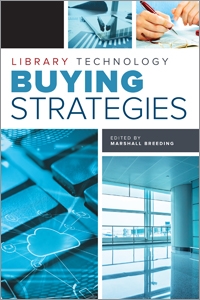
Primary tabs
You don't need to be an ALA Member to purchase from the ALA Store, but you'll be asked to create an online account/profile during checkout to proceed. This Web Account is for both Members and non-Members. Note that your ALA Member discount will be applied at the final step of the checkout process.
If you are Tax-Exempt, please verify that your account is currently set up as exempt before placing your order, as our new fulfillment center will need current documentation. Learn how to verify here.
- Description
- Table of Contents
- About the author
- Reviews
The prospect of a new automation system can be daunting. When do the benefits of moving to something new surpass the deficits of keeping the status quo? Can the products on the market deliver what libraries need to survive and prosper? Are those based on open source more flexible than proprietary systems? What about those deployed in the cloud? These and dozens more questions arise when libraries enter a selection process. Knowing the options is key to arriving at the best answers for your own organization. Marshall Breeding, who has followed the ins and outs of library technology for more than 30 years, gathers together a roster of fellow experts in the field to offer new practioners, library decision makers, and budgeting staff a comprehensive survey of what's out there. Providing substance beyond the buzzwords and hype, this guide quickly brings readers up to speed while providing practical advice on such topics as
- RFPs: what they are, how to write them and tips for getting bids;
- standards, interoperability, and trends in resource sharing;
- distinguishing between infrastructure-as-service, software-as-service, and platform-as-service when it comes to cloud computing;
- what you need to know to start planning for cloud computing;
- how library service platforms differ from the traditional ILS; and
- factors to consider when comparing e-book platforms
Armed with this book's clear-sighted perspective, libraries will be empowered to make informed and responsible decisions concerning their technology infrastructure.
Preface
1 | Introduction to the RFP
2 | Writing the RFP
3 | Introduction to Resource Sharing
4 | Key Standards for Interoperability in Resource Sharing
5 | Types of Cloud Computing Solutions
6 | Planning for Cloud Computing
7 | Introduction to Library Service Platforms
8 | Criteria for Purchasing E-book Platforms
Index
Marshall Breeding
Marshall Breeding is an independent consultant, speaker, and author. He is the creator and editor of Library Technology Guides (https://librarytechnology.org) and the Libraries.org online directory of libraries. He is the editor for Smart Libraries Newsletter, published by ALA TechSource, and has authored the annual Library Systems Report, published in American Libraries since 2014. He has also edited and authored several books, articles, and book chapters; was formerly the director for innovative technology and research for the Vanderbilt University Library; and regularly teaches workshops and gives presentations both throughout the United States and internationally at library conferences.
“This book could be useful to an experienced librarian who requires a reference tool for the request for proposal process—which is clearly outlined within these pages. On the other hand, a librarian just starting out or a student of library and media science would also benefit from the clear and concise format of each meaningful chapter, and they would gain a detailed idea of the many exciting technological opportunities for today’s libraries … this book cements itself as a necessary companion for any library stakeholder.”
— VOYA
”The challenge of purchasing new technology may be daunting! This professional development tool will bring clarity to the formidable process of buying new library systems … With its unbiased presentation in a very competitive marketplace, this paperback will be useful to library administrators, boards, and staff seeking a path to information technology evaluation or purchase. In writing long-range plans with a technology component, library professionals will find this helpful as well.”
— ARBA
”It's interesting to see the author's take on this topic because of his extensive experience and perspective on the evolution of library technology ... A good starting point for all libraries thinking of making small or big-ticket technology purchases.”
— Against the Grain


